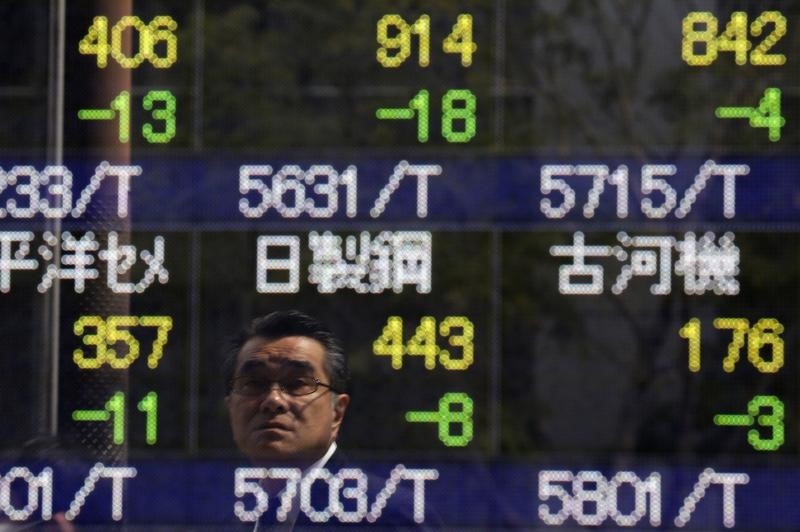This post was originally published on this site
https://i-invdn-com.akamaized.net/news/LYNXMPEA7H00D_M.jpg
Investing.com – Asia Pacific stocks were down Friday morning, continuing Thursday’s losses after U.S. Treasury yields’ moves increased investor jitters.
China’s Shanghai Composite was down 0.29% by 10:25 PM ET (3:25 AM GMT) and the Shenzhen Component inched down 0.07%. China’s National People’s Congress opened on Friday, where a conservative economic growth target of above 6%, below economists’ forecasts, was set for 2021. The congress also outlined fiscal support to support China’s economic recovery from COVID-19.
Beijing also placed reforms in Hong Kong’s electoral system on the agenda for its annual ‘two sessions’ meetings that began on Thursday. The reforms could lead to Hong Kong’s Legislative Council elections being delayed for another year to September 2022 and place curbs on democracy activist’s being elected. Congress is now reportedly set to review a draft resolution proposing the reforms in the coming days.
Hong Kong’s Hang Seng Index fell 1.07%.
Japan’s Nikkei 225 slid 1.48%. Japanese Prime Minister Yoshihide Suga said the current state of emergency in the Tokyo region, set to expire on Mar. 7, could be extended by two weeks.
South Korea’s KOSPI was down 0.88% and in Australia, the ASX 200 fell 0.99%.
U.S. Federal Reserve Chairman Jerome Powell disappointed expectations during the Wall Street Journal jobs summit on Thursday by declining to indicate purchases of long-term bonds to hold down longer-term interest rates. He did however mention the recent runup in yields without hinting at intervention during his speech at the summit, saying that he would be “concerned by disorderly conditions.”
Bond yields rose in Australia after a jump in the ten-year Treasury to 1.56% lifted the yield curve to its steepest point since 2015. The dollar inched up on Friday.
Some investors expressed concern about rising inflation and the impact of higher yields on elevated stock valuations, even as others view the rate moves as a positive sign of economic recovery.
“The U.S. dollar has gained 0.8%, and there you see the holy trinity of market fears – rising real rates, increased expectations of rate hikes, and a stronger U.S. dollar,” Pepperstone Markets Ltd. head of Research Chris Weston told Reuters.
Other investors agreed with Weston.
“It makes logical and intuitive sense that Treasury yields should move back up to 1.50% or 2%, but we are concerned with the rest of the market about the speed at which it’s getting there,” Allianz (DE:ALVG) Global Investors LLC investment strategist Mona Mahajan told Bloomberg.
Meanwhile, the U.S. Senate voted on Thursday to take up President Joe Biden’s $19 trillion stimulus package bill, with the chamber widely expected to approve the country’s sixth stimulus package since COVID-19-induced lockdowns began a year ago at the end of the debate over the weekend.
Investors also await February’s U.S. employment report, including non-farm payrolls, due later in the day.


